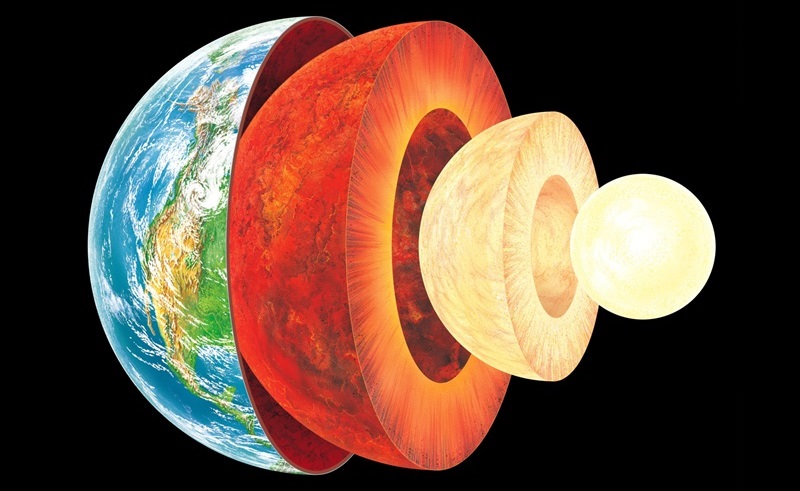For generations, scientists have probed the structure and composition of the planet using seismic wave studies. This consists of measuring shock waves caused by Earthquakes as they penetrate and pass through the Earth’s core region. By noting differences in speed (a process known as anisotropy), scientists can determine which regions are denser than others. These studies have led to the predominant geological model that incorporates four distinct layers: a crust and a mantle (composed largely of silicate minerals) and an outer core and inner core composed of nickel-iron.
According to seismologists from The Australian National University (ANU), data obtained in a recent study has shed new light on the deepest parts of Earth’s inner core. In a paper that appeared in Nature Communications, the team reports finding evidence for another distinct layer (a solid metal ball) in the center of Earth’s inner core – an “innermost inner core.” These findings could shed new light on the evolution of our planet and lead to revised geological models of Earth that include five distinct layers instead of the traditional four.
The research was led by Dr. Thanh-Son Pham and Dr. Hrvoje Tkalcic, a postdoctoral fellow and professor with ANU’s Research School of Earth Sciences (RSES), respectively. As they indicate, the team stacked seismic wave data from about 200 earthquakes in the past decade that were magnitude-6 or more. The triggered waveforms were recorded by seismic stations worldwide, which traveled directly through the Earth’s center to the opposite side of the globe (the antipode) before traveling back to the source of the earthquake.

Anisotropy measurements of Earth’s inner core based on these waves’ travel times revealed previously-unrecorded data about Earth’s interior structure. This included the possible presence of a layered structure in the innermost part of the inner core. “The existence of an internal metallic ball within the inner core, the innermost inner core, was hypothesized about 20 years ago,” said Dr. Pham in an ANU press release. “We now provide another line of evidence to prove the hypothesis.”
The direction and travel times of seismic waves indicate differences in the arrangement of iron atoms at high temperatures and pressures or the preferred alignment of growing crystals. After examining the bouncing seismic waves, the team found that they repeatedly probed spots near the Earth’s center from different angles. By analyzing the variation in travel times from different earthquakes, they inferred that the crystalized structure in the core’s innermost region is likely to have an outer layer.
According to the team, these findings might explain how waves speed up or slow down depending on their angle of entry as they penetrate the innermost inner core. Said Dr. Pham:
“By developing a technique to boost the signals recorded by densely populated seismograph networks, we observed, for the first time, seismic waves that bounce back -and forth up to five times along the Earth’s diameter. Previous studies have documented only a single antipodal bounce. The findings are exciting because they provide a new way to probe the Earth’s inner core and its centremost region.”

One of the earthquakes they studied originated in Alaska, which triggered seismic waves that ‘bounced off’ somewhere in the South Atlantic before traveling back to Alaska. According to the ANU team, these findings also suggest that there could have been a major global event in Earth’s past that led to a significant change in the crystal structure of Earth’s inner core. Therefore, said Prof. Tkalcic, the study of Earth’s deep interior could tell us more about the evolutionary history of planet Earth:
“This inner core is like a time capsule of Earth’s evolutionary history – it’s a fossilized record that serves as a gateway into the events of our planet’s past. Events that happened on Earth hundreds of millions to billions of years ago. There are still many unanswered questions about the Earth’s innermost inner core, which could hold the secrets to piecing together the mystery of our planet’s formation.”
Further Reading: ANU, Nature Communications

